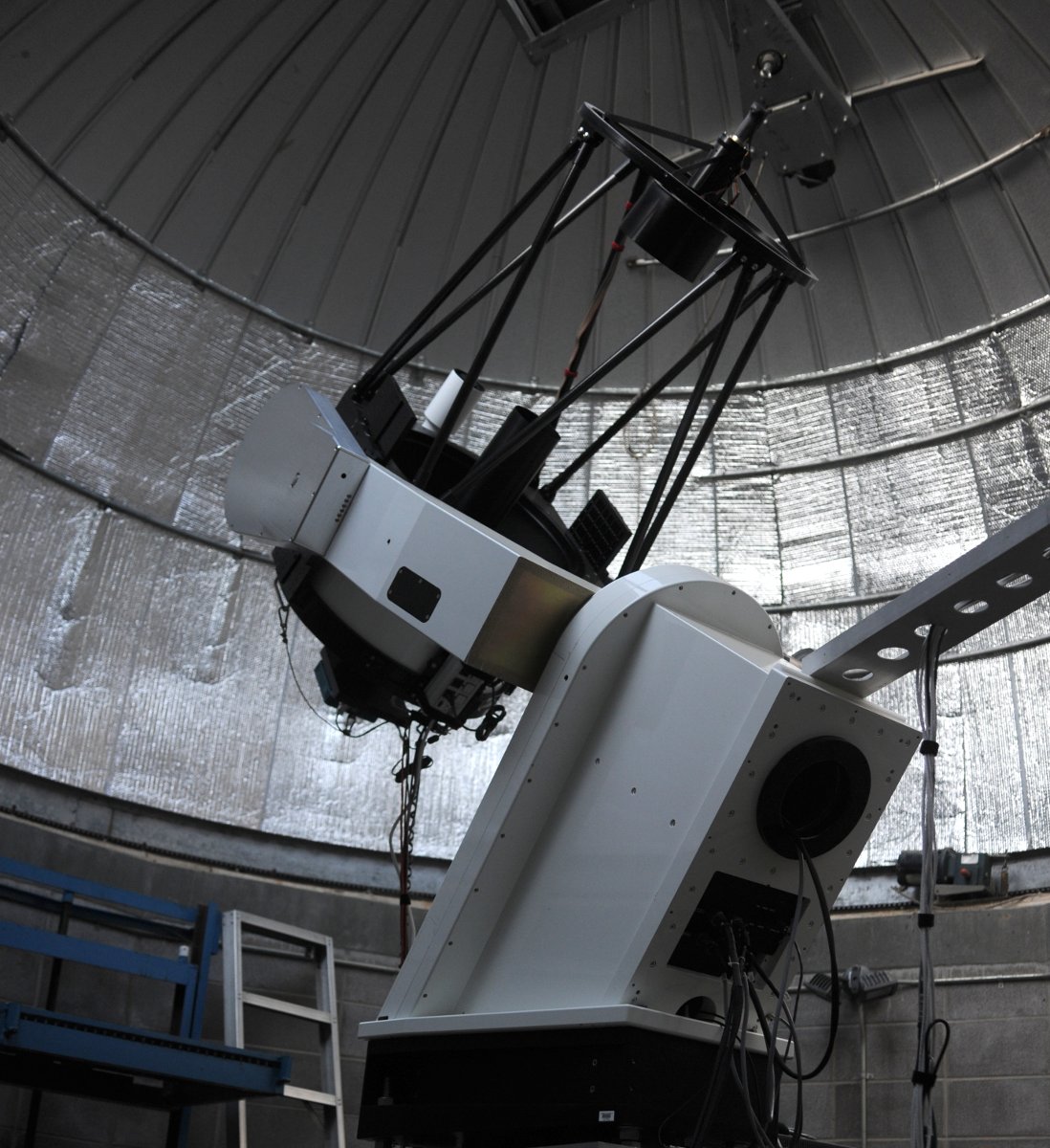

The 24-inch (0.6-meter) Ritchie-Chretien research telescope was manufactured by RC Optical Systems and installed in August 2006. It has been in routine use for measurements of transiting exoplanets and their host stars since then. The instrument features a very robust fork mounting with an absolute Renishaw precision encoder on the polar axis. It is capable of pointing with second-of-arc precision from a cold start under control of a version of XmTel including corrections for polar alignment.
The telescope's Zerodur optics were made by Paul Jones of Star Instruments. The f/8 system has a peak-to-valley wavefront variation of 0.242 wave, and 0.039 RMS, with a Strehl Ratio of 0.941. The mirrors have Spectrum Coatings enhanced aluminum coating with a reflectivity peaking at 96.9% at 528 nm, decreasing slightly to 95.7% at 450 and 650 nm. With efficient well-corrected optics useful from the atmospheric UV cutoff below 380 nm through the near infrared above 2 microns, the 0.18 arcsecond diffraction is achievable for visible light with very short "lucky" exposure times to minimize atmospheric turbulence.
The instrument is focused by a precision adjustment of the secondary mirror to bring the focal plane into coincidence with a fixed focal position 255 mm from the back of the primary mirror cell. Spacers are used to put the camera or other instruments at the proper position, and an encoded focus motor moves the focal plane 5 microns per encoder count. The image scale in the focal plane is 42.3 arcseconds/mm, so that 1 arcsecond corresponds to approximately 24 microns. At f/8, the telescope can focus precisely to within its diffraction limit since the least count on the focus encoder translates to a image size for a point source of 0.026 arcseconds. In long exposure imaging with averaging seeing of 1 arcsecond, focusing precision of 40 encoder counts is typical. A focal plane corrector and instrument rotator are available but are not used for photometry or spectroscopy at the present time.
For precision photometery, the telescope has used an Apogee U16M CCD camera with a 4096x4096 array of 9 micron pixels which oversampled the seeing and permited very accurate photometryover a wide dynamic range. In this mode the telescope has contributed to the discovery and confirmation of dozens of extrasolar planets. The camera is available with interchangable filter wheels provide the Sloan filter set g',r',z', i' for photometry, filters for color imaging, and narrowband interference filters including [SII], H-alpha, [O III], H-beta, and Na D. Similar filter sets are also used at the CDK20 telescopes at Moore and Mt. Kent, and the CDK700 at Mt. Kent, and the Manner telescope at Mt. Lemmon. Senstive InGaAs cameras with are available for imaging in the J- and H-bands at 1.25 and 1.66 microns when cold dry air permits.
The telescope is currently engaged in evaluating a small echelle spectrograph for characterizing stars and measuring stellar radial velocities. A wide field auxilliary telescope that is carried by the main telescope provides photometry of bright stars and imaging through interference filters while serving for field acquisition for spectroscoopy. Exoplanet transit photometry continues on clear nights with remote operations of the Manner telescope in Arizona, a twin to this one equipped with a similar focal plane camera and filter system.
The RC24 photo gallery has more views of the telescope and its instrumentation through time. Some images taken with the telescope and others at Moore and Mt. Kent observatories are available in the Shared Skies Gallery.
